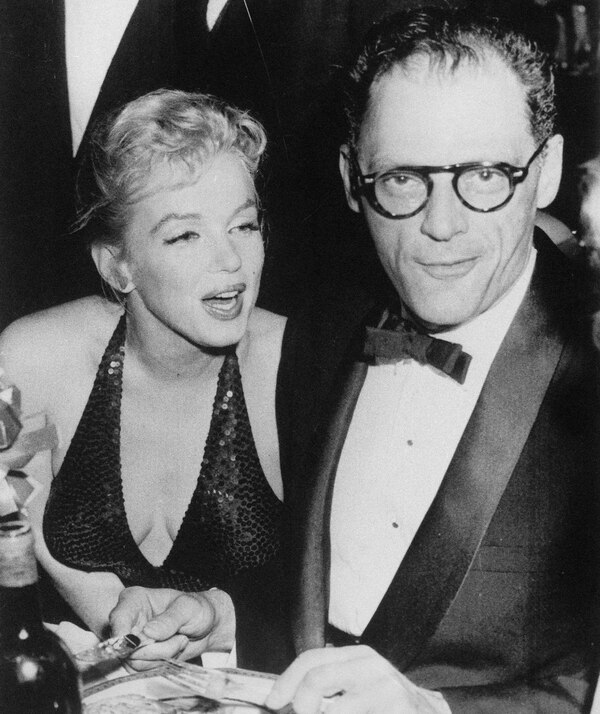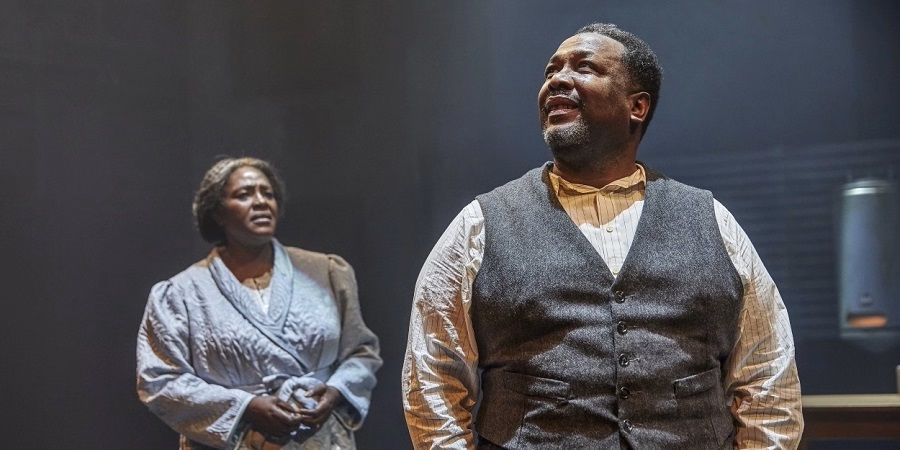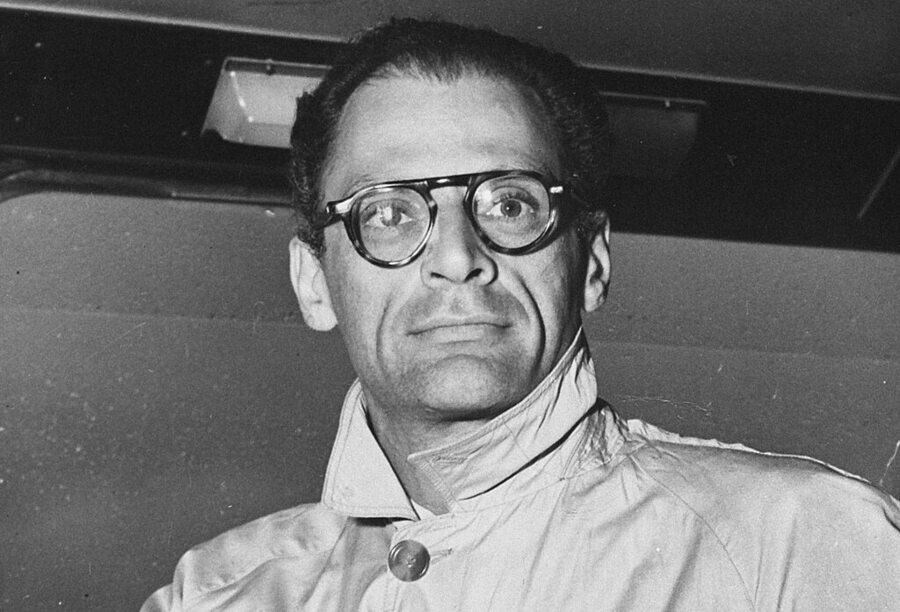“By May 1940,” writes John Lahr, Arthur Miller “was prepared to admit defeat.” The aspiring playwright, then 24 years old and still living with his parents, had received yet another rejection letter, this time for a historical epic about the conquest of the Aztecs. “Have I justified my self-anointed and self-appointed existence as a writer?” he lamented to his dramatic writing professor.
Four years later, another play of his (titled The Man Who Had All the Luck, ironically) was fortunate enough to make it to Broadway, only to close after four performances and a slew of bad reviews. “I simply decided I would never write another play,” he later recalled of the moment. And yet, with just a little more persistence, at age 31, Miller wrote All My Sons, which electrified postwar audiences in January 1947 and launched what is now seen as a Golden Age decade in American drama, dominated by himself, his contemporary Tennessee Williams, and their mutual director (and frenemy) Elia Kazan.

To anyone who grew up with the image of Miller as a lionized elder statesman of the American theatre, Lahr’s account of Miller’s bumpy “origin story” is the most revelatory part of Arthur Miller: American Witness, the short biography he has written for Yale University Press’s Jewish Lives series.
How refreshing to meet this interesting, confused young writer before he became an institution, struggling to find a literary voice or even any vocation at all. Initially born into wealth in 1915, Miller watched his father, an immigrant garment manufacturer, lose his fortune in the stock market crash of 1929, upending the family’s social and economic status overnight. As a lackadaisical high school student, young “Art” showed little ambition and failed to gain acceptance to college, or at least one that wouldn’t charge him tuition. A year later, he had begun taking an interest in writing and applied for a literary scholarship to the University of Michigan—which he didn’t win, though the college took him in anyway on academic probation.
After discovering an affinity for playwriting in his sophomore year (“despite the fact that he had seen only three plays in his life,” Lahr points out), Miller pursued the craft doggedly and even found professional work after graduation with the Federal Theatre Project and numerous radio drama series. He also tried journalism and fiction when Broadway kept rejecting him, but with not much greater success.
The play he started in 1944 that became All My Sons he considered to be his “final shot” before giving up the stage for good. This time he would put aside his more esoteric impulses to write tragic verse drama or philosophical fables (like some of his earlier efforts) and focus on the here and now in the kind of realist well-made-play dramaturgy that Broadway clearly favored. Under Kazan’s direction, the script’s dissection of a contemporary suburban family’s reckoning with wartime secrets sizzled with emotionally raw acting, especially in its climactic confrontation between guilty father and disillusioned son. Reviews overall were mixed, but success was secured by The New York Times’s Brooks Atkinson, who hailed it as “an original play of superior quality by a playwright who knows his craft and has unusual understanding of the tangled loyalties of human beings.” Finally, the Arthur Miller we know had arrived.
Lahr takes nearly half of his 202 pages to work up to this moment, and it pays off. His portrait of the playwright as a young striver shows how, step by step, failure by failure, Miller taught himself how to write a play. (Close readings of these early efforts demonstrate this progress vividly.) As a result, the titles that would later become known as his masterpieces emerge in a new light. Death of a Salesman (1949), The Crucible (1953), and A View from the Bridge (1955) all followed All My Sons in amazingly quick succession, the product of a driven young writer in his 30s pushing the limits of commercial theatre. After waiting so long to break through, Miller’s frustrated ambitions exploded during these years in bold plays that experimented with form (Salesman’s stream-of-consciousness staging, Bridge’s emulation of classical tragedy) and challenged political orthodoxy (Crucible’s anti-McCarthyism parable). They were not created to be classics (Crucible ran only 197 performances), just urgent responses to the historical moment.
After A View from the Bridge, however, Miller didn’t write another play for nine years. And the ones that would follow over the remaining four decades of his life never gained similar acclaim. As he got older, the playwright even admitted, “My stuff seems to bear little relation to what has gone before.” To paraphrase a famous line from Death of a Salesman, one cannot help but wonder: What happened in 1955, Willy?

For Lahr, the answer to that question appears to be Marilyn Monroe. Miller’s tumultuous marriage to Hollywood’s biggest sex symbol may be the second most famous thing about him after his plays (“The Great American Brain and The Great American Body” was a typical tabloid headline), and this biography certainly gives it due attention, more than 30 pages worth. As recounted largely from Miller’s perspective, their five-year relationship comes across as a nightmare of codependency during which he was “traumatized by Monroe’s madness and by his own stupidity”—the “stupidity” being not sexual obsession but a savior complex.
Holding her hand through numerous difficult movie shoots, Miller was determined to be her “angel of repair,” her “talisman of transformation” from pinup girl to serious thespian. He had devoted years to writing a screenplay for her, The Misfits, that was to legitimize her as an actress, but by the time it went into production in 1960, husband and wife were barely on speaking terms and they separated soon after the film wrapped. “If the pair hadn’t divorced, he [Miller] said, ‘I would be dead,’” writes Lahr. Within a year of their breakup, however, it was of course Monroe who would literally be dead, from an overdose at age 37. Miller’s only tragedy would be some bad reviews of his new plays.
The first of those plays, After the Fall (1964), was a nakedly autobiographical account of the Miller-Monroe marriage that drew from critics both aesthetic scorn and personal cringe. (Robert Brustein called it “a shameless piece of tabloid gossip, an act of exhibitionism that makes us all voyeurs.”) Miller does not go easy on his stand-in protagonist, Quentin, who admits to living “merely in the service of my own success.” But the flashbacks in this disjointed memory play highlighting the unstable antics of Quentin’s late wife (“Maggie”) overshadow the rest of the narrative and have the effect of casting him as the ultimate victim. Lahr insightfully identifies “survivor’s guilt” as the key theme here and in other later Miller plays—sometimes dramatically compelling for the audience, and sometimes, as Kazan said of After the Fall,, “insufferably noble.” (And he directed the play!)
Such dramaturgical self-pity amplifies another unfortunate truth that comes across in Lahr’s book. Arthur Miller may have been a great liberal humanist on the public stage. (The subtitle “American Witness” alludes to his heroic moment defying the House Un-American Activities Committee by refusing to “name names” of former communist colleagues.) But in his private relations, he appears to have been a less than admirable human. Leaving his wife of 16 years (his college girlfriend Mary Slattery) for Monroe is one well known example, though Lahr argues their relationship had chilled long before. And yet Miller’s eventual betrayal of Monroe in After the Fall—exploiting her personal demons for dramatic effect and self-exoneration—comes across as even worse.
His third marriage, to German-born photographer Inge Morath, seems to have been more mutually satisfying, but even that chapter in his life has been tarnished by the recent revelation of a hidden son with Down syndrome whom Miller institutionalized from birth and almost never saw. “This abandoned child was at once a secret and a dereliction that did not jibe with Miller’s public image,” Lahr writes.
Another troubled relationship in Miller’s life was with his older brother Kermit, whom Lahr casts as a supporting character throughout the book in a kind of Miller-esque family drama of its own. (Indeed, as he demonstrates, the parallels with Miller’s 1968 fraternal-conflict play The Price are uncanny.) Tensions between the two began when Kermit gave up his chance at college to help at his father’s failing business and then to serve in combat during World War II. Arthur, meanwhile, was exempted from the draft for a minor “football knee injury.”
After the war, Kermit struggled with post-traumatic stress and settled into a meager business as a carpet salesman. The two brothers rarely socialized, and while their conflicts may seem like routine familial spats, one telling anecdote stands out as typical of Miller’s self-absorption and disconnectedness from everyday humanity. In declining to attend the bar mitzvah of Kermit’s son, he wrote to his brother that his solitary work ethic—“far different from insensitivity”—was in fact a terrible “sacrifice” of his own for the sake of his writing, and that “with any less ‘selfishness’ there would be fewer [artistic] results.” However much we all occasionally desire to back out of family obligations, one would hope to come up with a more compassionate excuse than I’m too busy being America’s greatest playwright.

Miller’s personal failings may ultimately come off more as misdemeanors than crimes, but Lahr’s inclusion of them adds depth and realism to his portrayal of someone who no longer needs to be deified as a man in order for his works to remain relevant onstage—especially at a moment when Miller’s legacy is at an interesting inflection point in the contemporary American theatre. On the one hand, his best work proves to be as stageworthy as ever. Actors Philip Seymour Hoffman and Wendell Pierce have each reclaimed the role of Willy Loman in recent years with their own contemporary brand of star power. Ivo van Hove’s stripped-down 2014 A View from the Bridge conquered the West End and Broadway with the riveting immediacy of a daring new play. Currently, the National Theatre’s hit revival of The Crucible (hailed by the Times of London as “a five-star scorcher”) will be a featured attraction of the next NT Live series, beaming out to cinemas worldwide this spring.
But the Miller legend is also being increasingly contested on our stages. As Lahr documents, his later plays never caught on. Occasional Broadway revivals of After the Fall and The Price have been received with indifference, and the other dozen or so works post-1970 have never entered the repertoire. Even his greatest hits have invited challenges from living playwrights—especially regarding their inherently patriarchal framings. Sarah Ruhl’s Becky Nurse of Salem (at Lincoln Center Theatre) and Kimberly’s Belflower’s John Proctor Is the Villain (Washington, D.C.’s Studio Theatre) have taken aim at The Crucible, whose young female characters are so central to the action, but seen through the subjectivity of both the protagonist and his male antagonists. Two other new plays shift the focus of Death of a Salesman to Willy’s wife Linda, a character often cited as symptomatic of Miller’s gender blind spot, relegating women to passive suffering spouses or mere witnesses to their men’s struggles: Eleanor Burgess’s Wife of a Salesman creates a “missing” scene for the play between Linda and her husband’s tellingly nameless mistress (“The Woman”), and Barbara Cassidy’s Mrs. Loman speculates about “a Linda Loman who becomes a very different person after Willy’s death.”
While still looming large over the American theatre landscape, Arthur Miller likewise now seems a very different person since his death in 2005. At his best, Lahr expertly situates both playwright and plays in their specific historical moment. But he doesn’t do much to move Miller into the 21st century. Readers may be left wondering, will attention continue to be paid to Miller as cultural memory of the 1940s and 1950s recede even further into the distant past? Will his plays be able to thrive when divorced from their original context? Lahr offers little insight into such questions. But even as we wonder if Miller will still matter in the future, this lively biography offers a useful crash course on why he once really did.
Garrett Eisler (he/him) is a frequent contributor to this magazine.




